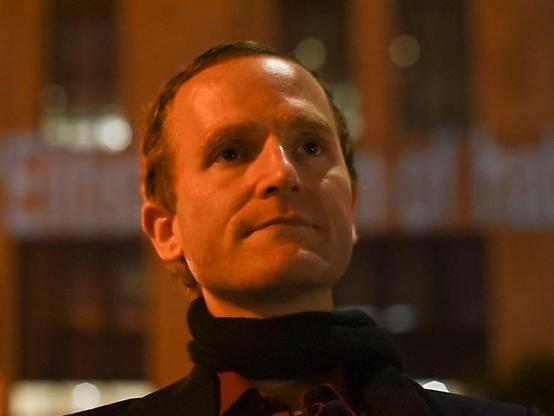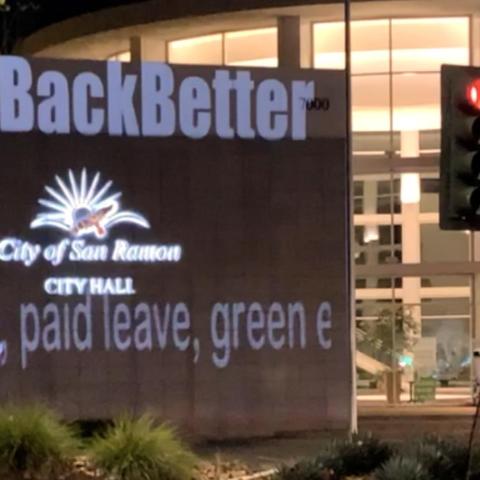Feedback calls for walk/bike separation in Leary/Market plan, but people still prefer Shilshole for Missing Link
People still prefer the city’s fully-designed Burke-Gilman Trail plan on Shilshole, though that project remains held up in a web of legal challenges. So if the city decides they must move forward with a route along Leary Way and Market Street instead, they want to see much more separation between people walking and biking than what has been shown in early designs.
SDOT released the outreach summary report (PDF) for Councilmember Dan Strauss’s Burke-Gilman Trail Missing Link alternative on Leary Way and Market Street this week, and the responses are fairly straightforward and uncomplicated.
It seems tough to misread this chart. Folks do not like the idea of simply widening the sidewalk on Market Street and calling it a trail. No other point in the entire feedback report got more support than this. People riding bikes don’t want to try to bike through a crowded sidewalk in a business district, and people walking, rolling or hanging out on sidewalks don’t want people biking there either. I can’t imagine business owners love the idea of their front doors letting out directly into the path of a designated bike trail, either. This is just not how it’s supposed to be done.
The feedback report specifically points to Seattle Bike Blog at the reason for this result, noting, “Seattle Bike Blog published an article encouraging readers to share their feedback with SDOT about the project. This included a note to share specifically that SDOT should separate the path for people walking and people biking in front of businesses. This may have led to a higher number of comments for this particular theme.” First off, good work, everyone. But second, we were not the only ones making this point. A group of folks at the Ballard Landmark retirement and assisted living building as well as Carter Subaru and real estate developers Teutsch Partners have been fighting the Leary concept, and they also list a lack of separation between pedestrian and bicycling spaces as a problem. “There is no divider between the Missing Link and the sidewalk,” notes the NoLinkOnLeary website. “This makes the path more dangerous as pedestrians won’t know where to expect to meet bicyclists and scooters.” So it’s not just the Seattle Bike Blog readers who see the problem here, which is why that bar is so much longer than the rest of the chart. It’s a point of cross-community agreement.
One Leary, the results were a little muddier. Support for the project outpaced opposition 2 to 1, but the amount of opposition is notable. This is most likely from the NoLinkOnLeary campaign. Separating pedestrian and bicycling spaces is still the top point of agreement, though there is big support for safer intersections and crosswalks. The report notes that there was a lot of support for adding missing crosswalks at Vernon and Ione, which were points Seattle Bike Blog had suggested.
Again, separating modes was the top suggestion for the short section on 17th between Shilshole and Leary, though preserving trees made a good showing here.
Finally, the general feedback question showed a huge response for “prefers another route.” The reports explanation notes that most of these folks preferred the Shilshole route because it is more direct and has fewer conflict points such as driveways and busy commercial sidewalks. Cascade Bicycle Club has been consistent that while they support safety improvements and a bike route on Leary and Market, they do so in addition to their continued support for the trail plan on Shilshole. However, it wasn’t just bike riders pushing for Shilshole. The NoLinkOnLeary group has also been pushing for Shilshole as their preferred option. Someone at the Ballard Landmark even posted a poem about putting the trail on Shilshole in the window as well as signs pointing people to the NoLinkOnLeary.org website.
SHILSHOLE, OH SHILSHOLE,
YOU’RE MY BIKE TRAIL OF CHOICE.
I’M A ROLLING OLDIE, WHO LIVES NEARBY,
HOPING YOU’LL HEAR MY VOICE.
I WANT TO ROLL BUMPLESS BY THE CANAL,
WITH BOATS AND THE SEAGULLS’ SQUAWKS,
AND NOT DIVERT TO LEARY,
ON MY STROLL TO THE CHITTENHAM LOCKS.
-COLLEEN COGHLAN
Now, as much as I love a good trail advocacy poem (and I do, a lot), I don’t agree with everything on the NoLinkOnLeary site. There are ways to design a bike route that safely avoids conflicts with accessible loading zones, and SDOT’s team so far has clearly not been able to convince folks at the Ballard Landmark that they have the right solution. But I hope the folks are open to solutions other than just not building a bike route at all. There are a lot of potential benefits in this plan for Landmark residents, such as dramatically shorter and safer crosswalks. Bike riders seem ready to fight for a much improved design, and it would be great if folks can unite behind a shared vision. Folks should ask themselves, “If the city insists on building this trail on Leary, what are our demands?” Any missing crosswalks in the area? Any missing curb cuts? Do residents feel cut off from certain area destinations? Come up with a list. Bike advocacy groups are always going to be wary of language that implies total opposition to the idea of a bike route on a major street like Leary. But when I read the NoLinkOnLeary site, I see more points of agreement than differences. You can see the points of synergy in these charts. That’s a winning coalition.
Dead-end ideas
Every time the Missing Link comes up, there are a couple ideas people suggest that have already been ruled out and are not coming back. So I figured I’d address them here just in case you come across them somewhere.
A Ballard High Line
Like New York City’s amazing elevated park the High Line, why not build an elevated bike path on Shilshole that flies over the business driveways?
Well, as much as that does sound fun, it would be wildly expensive. If we are going to invest that kind of money in a piece of biking and walking infrastructure, then we should be spending it to cross actual barriers like freeways, ravines or waterways, not political barriers like a group of businesses that keep suing. Plus, these are maritime businesses that may need to move tall things in and out, so the path would need to be very tall. But also, what if someone wants to exit to visit Ballard destinations rather than just flying over the area? Are we going to have long and winding off-ramps along the way? Plus, anyone traveling to any point between trail access points would still be forced to navigate all the existing Missing Link challenges and hazards. I appreciate the dream behind the idea, but it doesn’t make sense here. I’m sorry. I’d love to talk about some other areas where this kind of thinking might work better, though.
Ballard Ave
Ballard Ave is currently the best bike route option for many people, but mostly because Shilshole and Leary are so terrible. Ballard Ave was included in the city’s list of options for the Missing Link route during the environmental review process, and people were extremely emphatic that they hated the idea. During public feedback, it registered only 1% support as the route preference (Shilshole received 81%). The Ballard Market folks in particular got mobilized very quickly and made it clear they were against it. I can assure you people would come out strongly against it all over again if it ever shows up on a list of options again, which I highly doubt will happen (it was listed in the study because the city had to show they considered all the options, and it was ruled out as quickly as possible). But even without the clear opposition from businesses and the market, Ballard Ave is a terrible place for the Missing Link. It’s got cobblestones for one, which is not accessible. It is also very active at various times of day and completely closed for travel every Sunday. Then after all those disadvantages, it would also require a redesign of Market Street with all the same issues the Leary design is facing there. So I agree that Ballard Ave is the best bike route today and that people will continue biking there even after the Missing Link is complete because that’s where many destinations are. But it is not the best place for a trail.
#SEAbikes #Seattle

